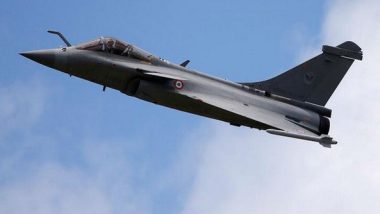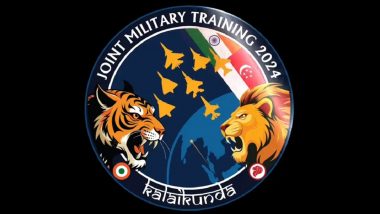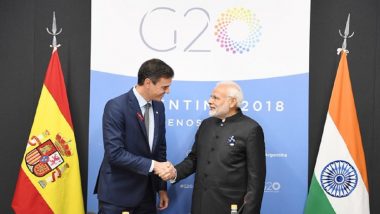Bordeaux, September 20: Moving a step closer towards operating the Rafale combat aircraft, the Indian Air Force on Thursday received the first Rafale combat aircraft at the Dassault Aviation manufacturing facility here. The first aircraft with tail number RB-01 was received by a team of Indian Air Force officers led by Air Marshal VR Chaudhary in France who also flew in the plane for around one hour, Indian Air Force sources told ANI. IAF Receives 'Acceptance' Rafale Jet From Dassault Aviation; India to Get First Aircraft on October 8.
As per the Rs 60,000 crore contract signed between India and France, the first aircraft was scheduled to be delivered in acceptance mode to the Indian side and it will now undergo trials and tests for another seven months more in France, sources said.
The tail number RB-01 has been named after Indian Air Force Chief-Designate Air Marshal RKS Bhadauria who had played a very important role in finalising the country's biggest-ever defence deal. The planes would now officially be inducted on October 8 into the IAF when Defence Minister Rajnath Singh visits France but the planes would start arriving in India only in May 2020 after validation of the India Specific Enhancements and training of pilots and personnel.
The Indian planes have been equipped with a lot of India-specific enhancements, which have been fitted at a cost of around one billion euros.Though small batches of Indian pilots have already trained on the French Air Force planes, the Indian Air Force would train 24 pilots in three different batches till May 2020 for flying the Indian Rafale fighter jets. Selfies on Rafale: French And IAF Pilots Take Pictures While Flying Rafale Jet, Sukhoi 30 MKI During Exercise Garuda 2019.
The Indian Air Force will deploy one squadron each of the Rafale combat aircraft at its airbases in Ambala in Haryana and Hasimara in West Bengal. In September of 2016, India signed a deal with the French government and Dassault Aviation to acquire 36 Rafale fighter jets for over 7.8 billion euros to arrest the fall of combat squadrons and meet urgent requirements on the eastern and western fronts.



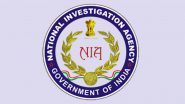



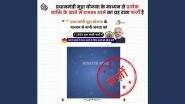





 Quickly
Quickly








